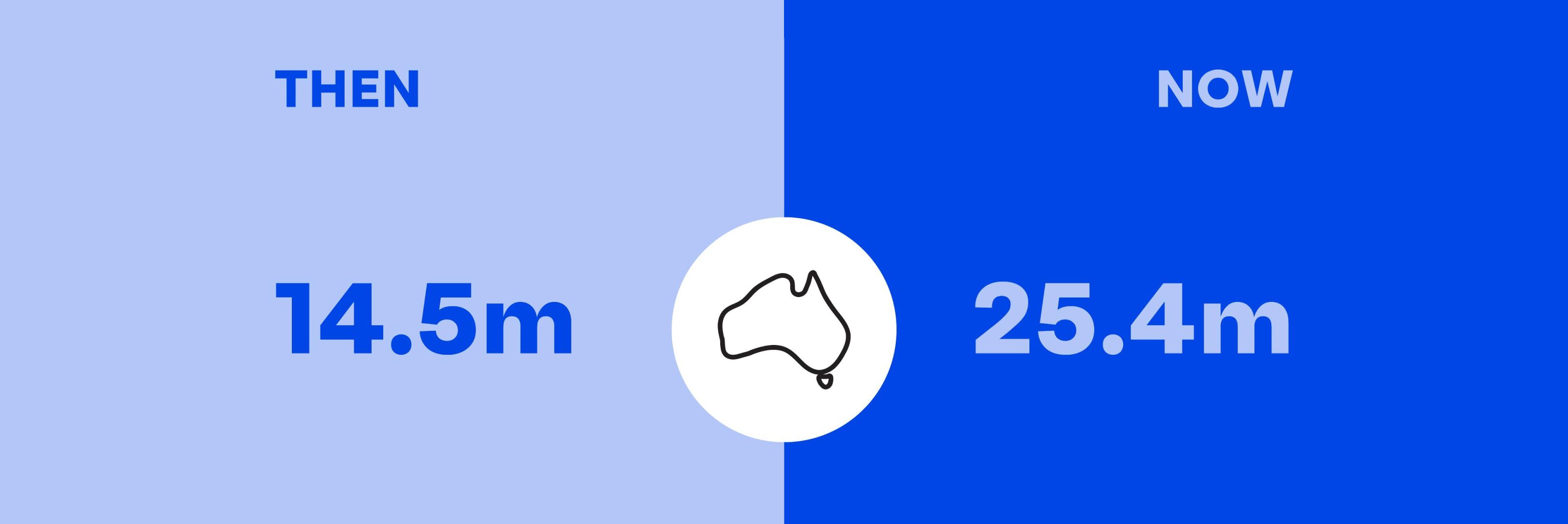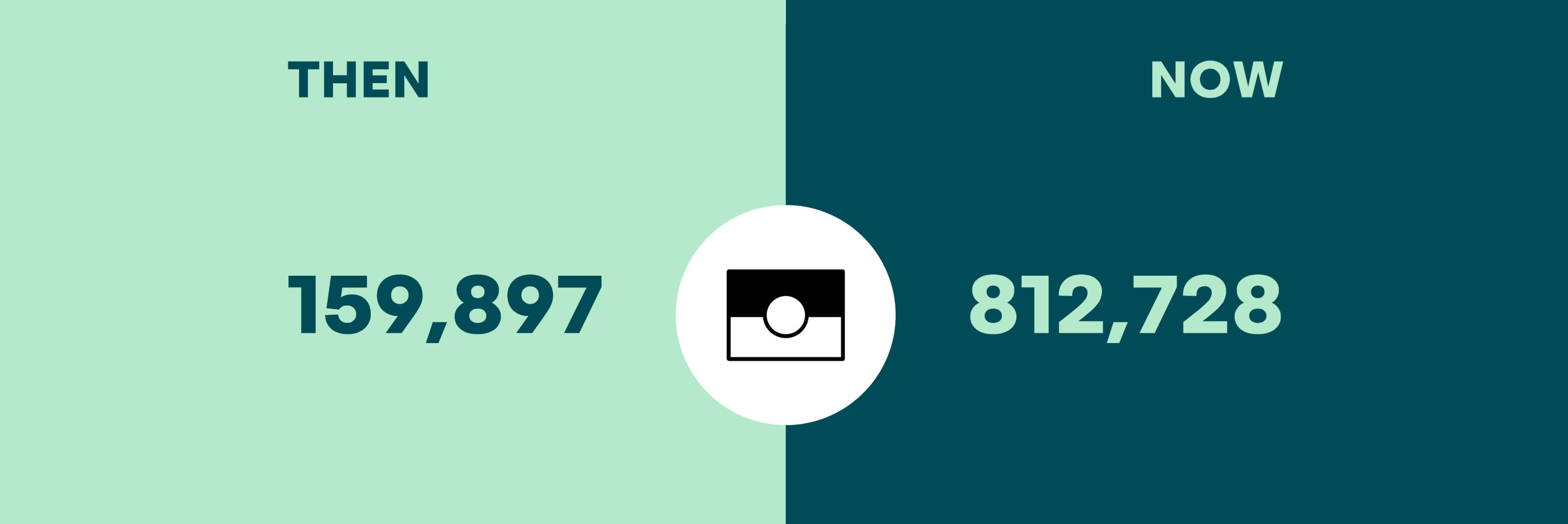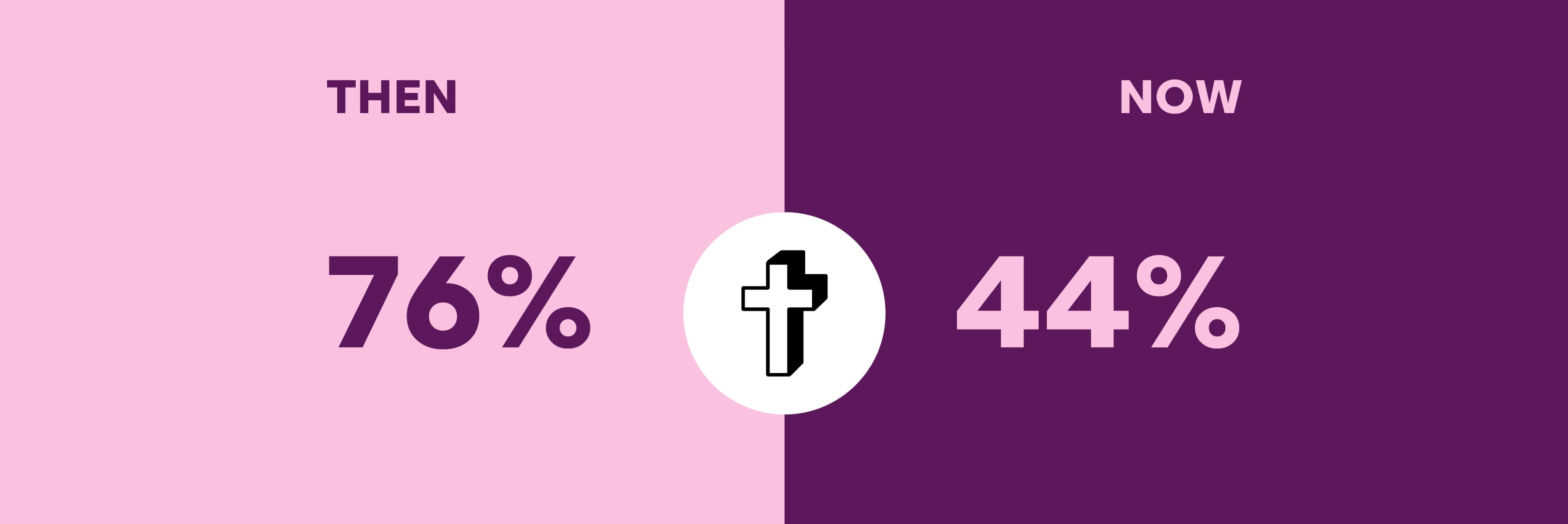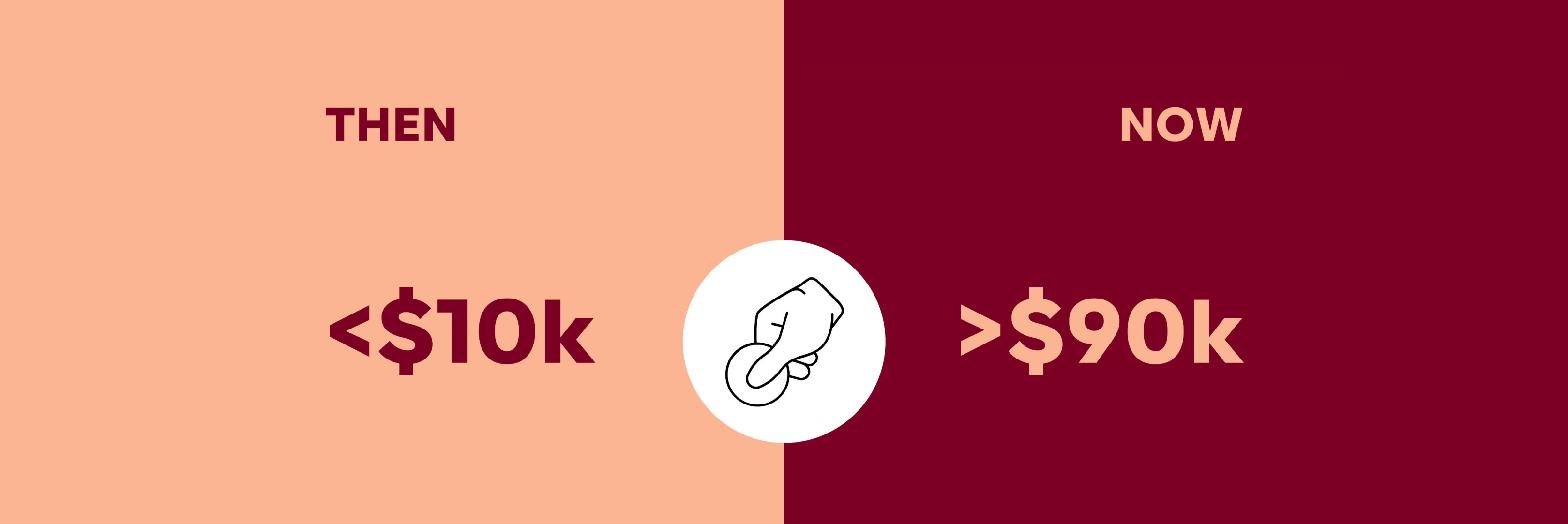By: Mark McCrindle
Picture this. It’s 1981. The first Walkman has just been released, the space shuttle has not yet made its first flight, the first London Marathon is scheduled, and, importantly, the 1981 Australian Census is set to take place.
A lot has changed in the last 40 years. We’ve moved from Walkman’s to wearable technology, and we’ve launched five space shuttles across 135 missions. More recently, civilians have been flown into space as part of commercial space travel.
To bring four decades of change home to Australia, let’s look at the most recent ABS Census data to see how we’ve changed and grown.
Population growth
In 1981, just as the Millennials (who are now Australia’s largest generation) began being born, Australia’s population was just 14.5 million people. According to the recent Census, Australia is 1.7 times larger at 25.4 million people on 10th August 2021 – the Census night.

Australia is a culturally diverse nation with 27.7% of Australians born overseas. Within Australia, there have been growing migrant communities. From 2016 to 2021, the Census data reveals the largest growing community is from India (217,963), followed by Nepal (67,752), Philippines (61,506), China (40,063) and Vietnam (38,642).
A fivefold increase in population of Indigenous Australians
Back in 1981, Australia’s Indigenous population was recorded at just under 160,000. Today, it’s increased to 812,000.
While much of this growth is from natural increase, it also shows that more Indigenous Australians have been happy to recognise and record their heritage over the last four decades.

Australians born overseas
In the 1981 Census, just three million Australians said they were born overseas. Today, with the help of globalisation, that number has increased to seven million Australians having been born overseas.

Changes in religious affiliation
In 1981, three in four Australians (76%) identified their religion as Christianity. Today, that proportion has decreased to 44%. In 1981, just 10% of Australians identified as having no religion, while today that has increased to 39%. That’s almost a fourfold increase in no religion over the past four decades.

Wage changes
Back in 1981, most Australians were earning less than $10,000 per year. Today the median earnings per annum is above $90,000. This equates to a ninefold increase in earnings over the last 40 years.

Weekly rent
As well as a rise in wages, there has been a significant increase in living and housing costs as well. Back in 1981, the average weekly rent cost was $60, compared to today’s $375. This equates to a sixfold increase in rent in four decades.

Median house price
While wages have increased 9-fold in the last 40 years, it has not kept pace with house price growth, which has increased more than 16-fold, with variations of this across Australia’s capital cities.
In 1981, the median house price for a house in Sydney was just under $79,000, compared to $1.4 million today. You could pick up a house in Melbourne for a lazy $44,000 in 1981, compared to just under one million dollars today. A house in Brisbane in 1981 costed $45,000 compared to $885,000 today.

Australia has changed a lot over the last 40 years, more than we may have realised and Census data is a great way to objectively see the change.
Seeing the demographic breakdown of Australia can be overwhelming, so to make things easier we’ve visualised what Australia would look like if it were a street of 100 households.
.
Article supplied with thanks to McCrindle.
About the Author: McCrindle are a team of researchers and communications specialists who discover insights, and tell the story of Australians – what we do, and who we are.
Feature image: Photo by Florian Schmetz on Unsplash

